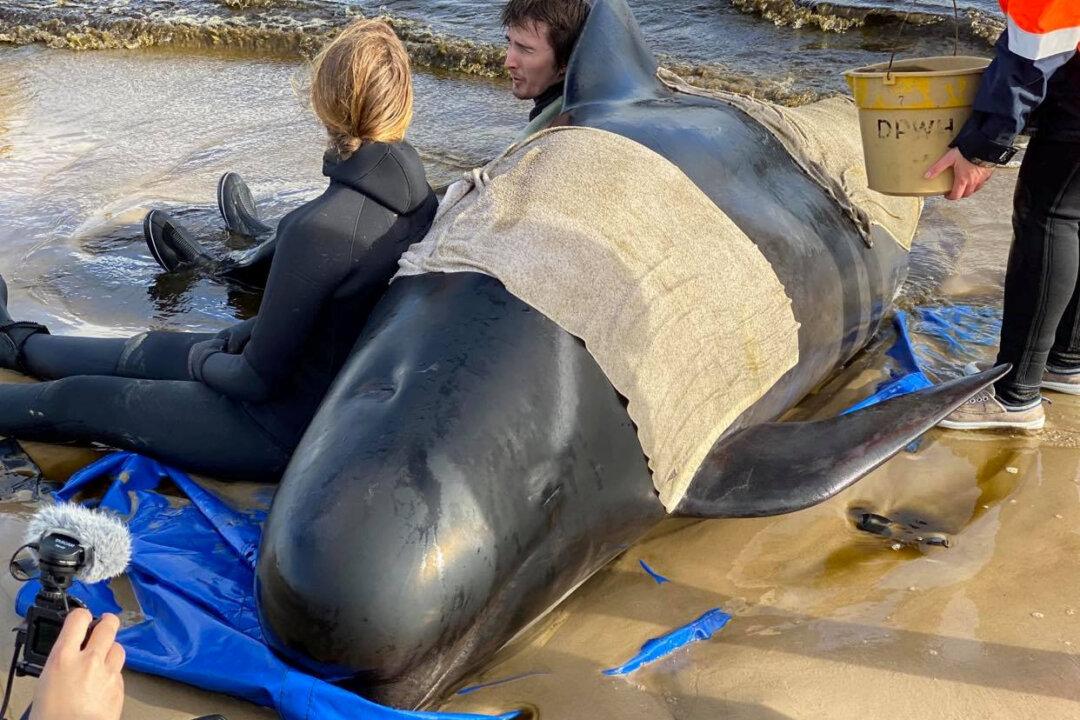Rescuers have found a further 200 whales, most of which are feared dead, in Macquarie Harbour on Tasmania’s west coast on Sept. 23, in one of the world’s largest whale stranding.
This brings the total number of dead pilot whales to about 290 and stranded to over 450.





